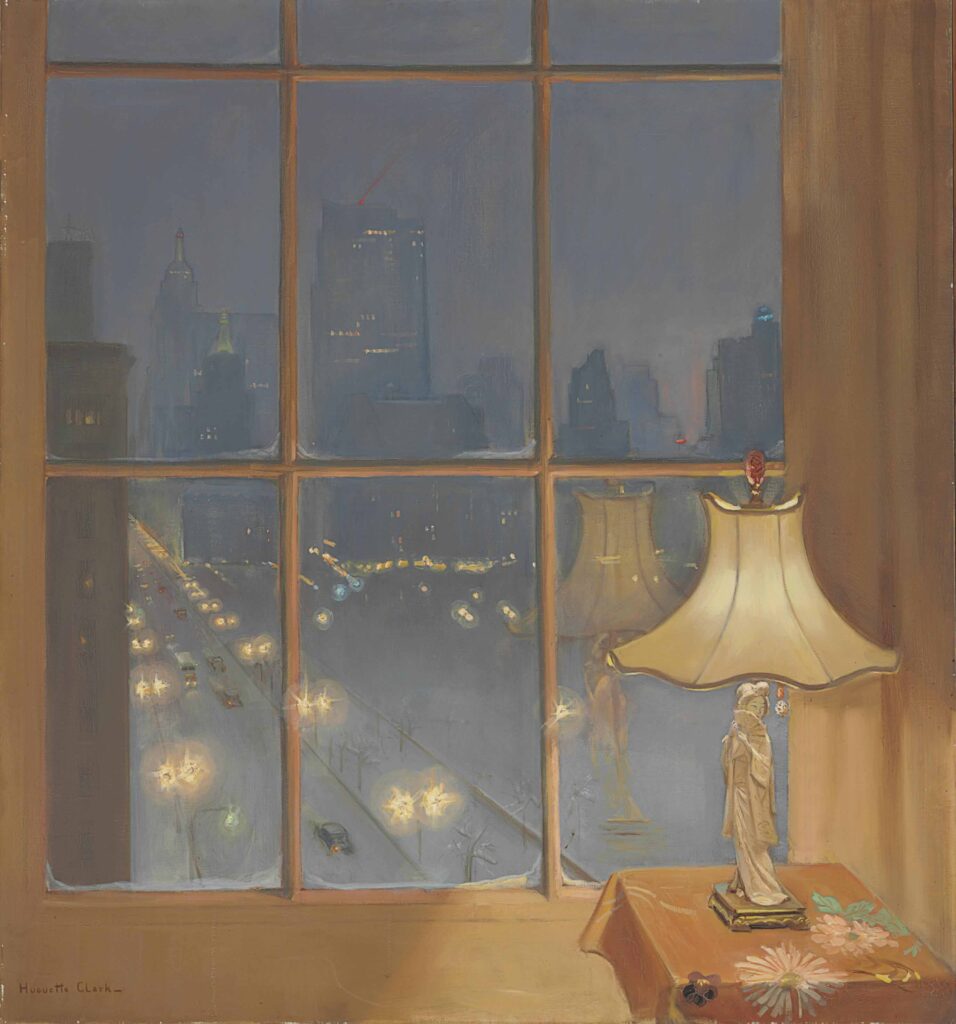
Wow, just when I thought we were having something very special when considering the implications of portraiture and erasure in a found real estate listing photo of a laundry dungeon in an epically gross American University flophouse–and I don’t mean to imply I’m not grateful for The Discourse–but anyway, y’all* were apparently also fine with letting me go yet another year without knowing that forgotten heiress recluse who kept up her sprawling Fifth Avenue co-op and Santa Barbara mansion like she’d be back any minute but actually checked herself and her doll collection into a midtown hospital room and only left decades later when she died in 2011 at 104 Huguette Clark made paintings?
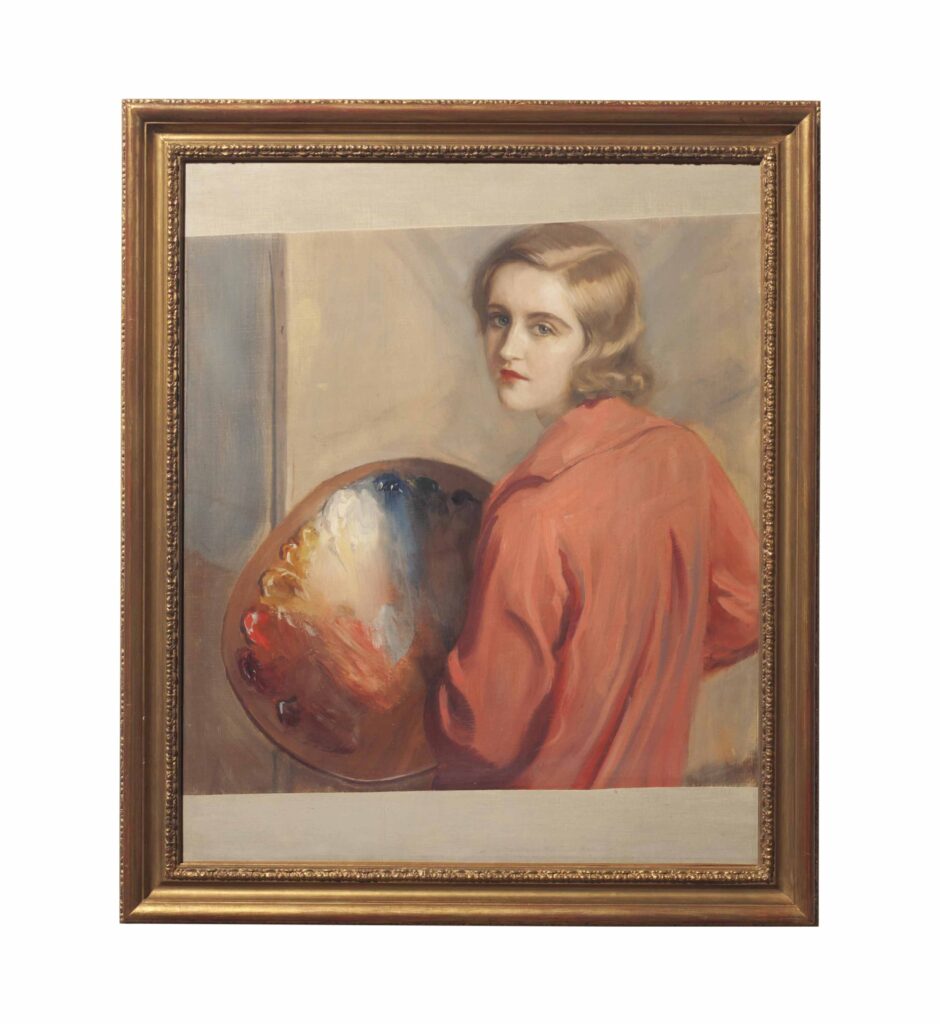
And that except for a few included in a two-week show at the Corcoran Museum in Washington in Spring 1929–four years after her father’s death and the bequeathing to the Museum of 800 artworks and a Clark Wing–they were only first seen publicly in the jumble of an estate sale at Christie’s in 2014, where they sold for not that much money? Anyway, seventeen paintings by Clark were included in that sale, and she had some moments, mostly that window above, with the geisha lamp reflected in it. [Another four signed paintings, plus a couple of attributions, some prints, and an album of reproductions of her paintings, were auctioned in New Jersey in 2017, leftovers from Christie’s cataloguing. A highlight was this painting of a Dutch doll, which checks a lot of Clark boxes.
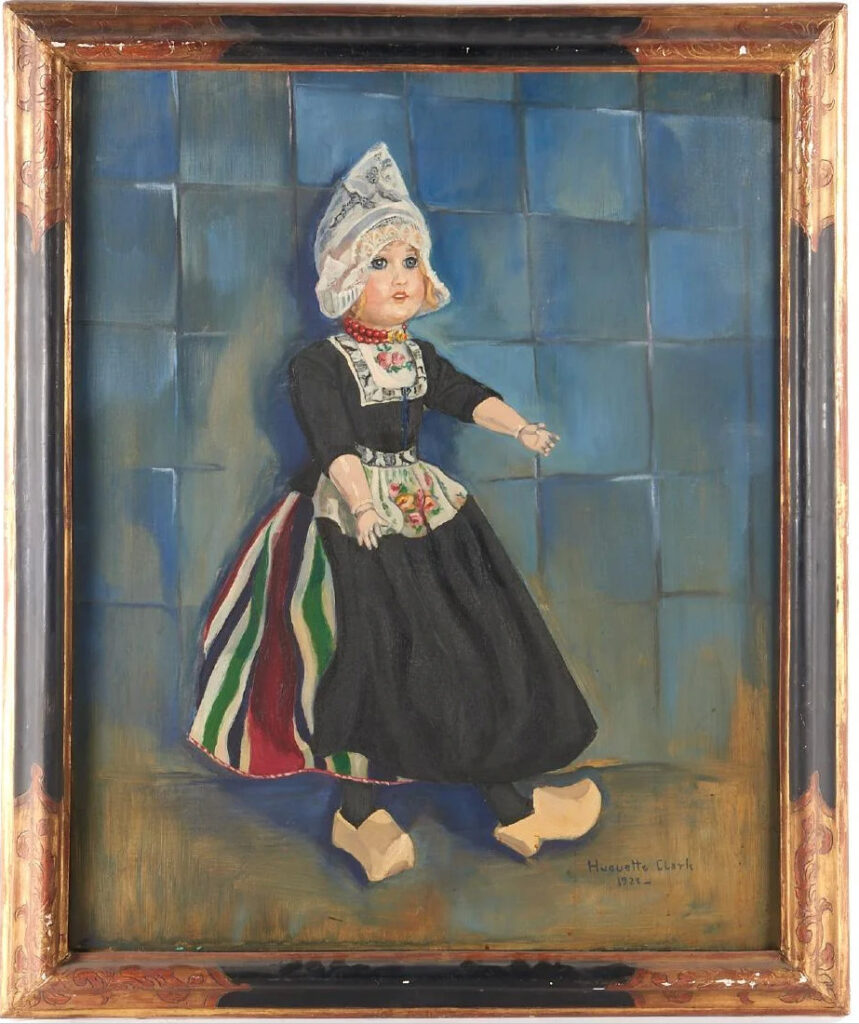
Also, though her teacher Tadeusz Styka specialized in painting portraits of socialite women, and once painted Clark appearing to paint a nude man, many of Clark’s surviving paintings are of Japanese women.
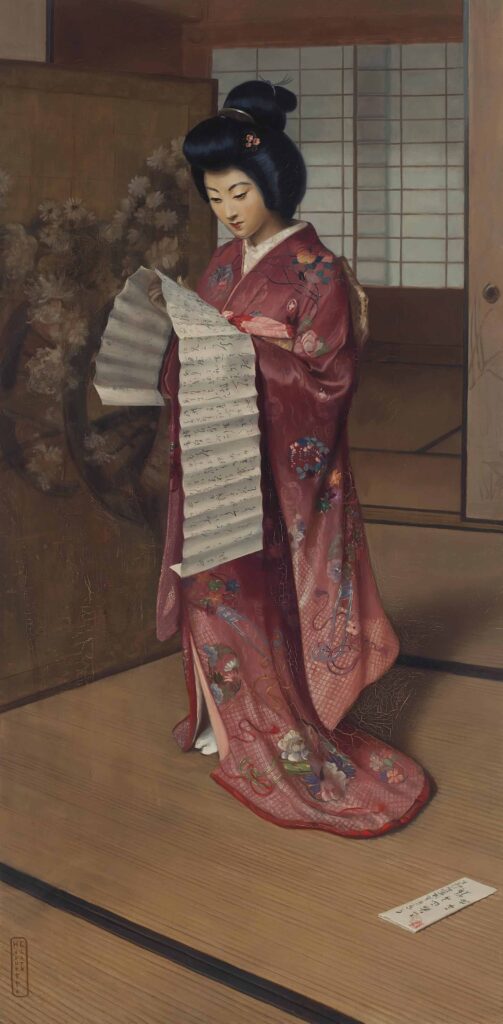
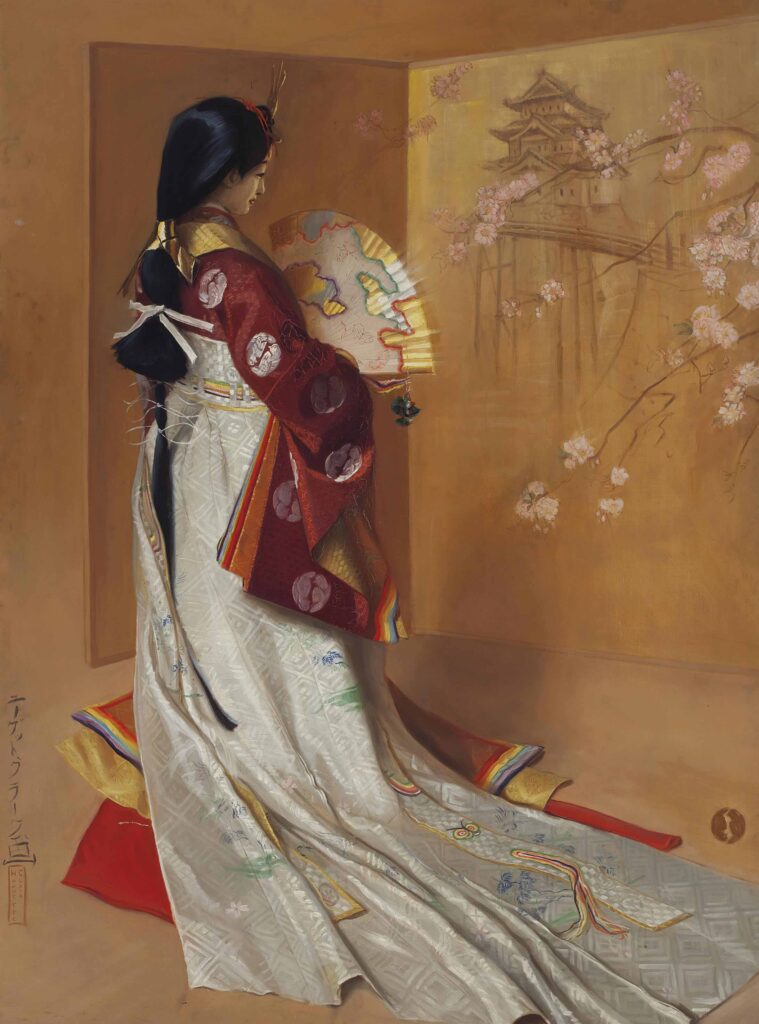
I just realized Christie’s switched the title and lot descriptions for the painting above and below, calling the artist’s signature at left “pseudo-characters,” when in fact she signed her name in katakana. It’s also true the strokes on the kanji show she was copying, rather than studying how to write, but she sure learned the hell out kimono layers. And the landscape with the castle on that screen is the subject of its own painting. Mostly, her geisha paintings feel a little uptight.
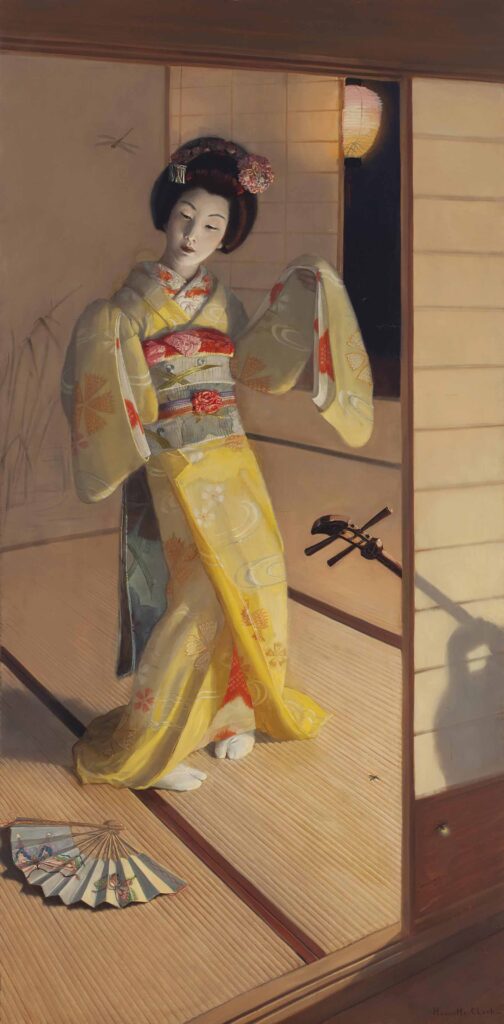
Except for this one which, for my money, this was the best one, because it was also the weirdest. The geisha’s hands pulled into her sleeves, her feet, the stark lighting, the diagonal shikii across the bottom (which does not seem quite parallel with the the kamoi across the top), the suggestive but alien shamisen neck and head, and the invisible musician who somehow manages to feel more alive than the geisha. And all at beyond full scale: 86 x 63 inches! I can’t help but feel this image doesn’t capture it all.
Speaking of which, the only image of the only painting with a possible exhibition history, below, looks like it was chopped in half.
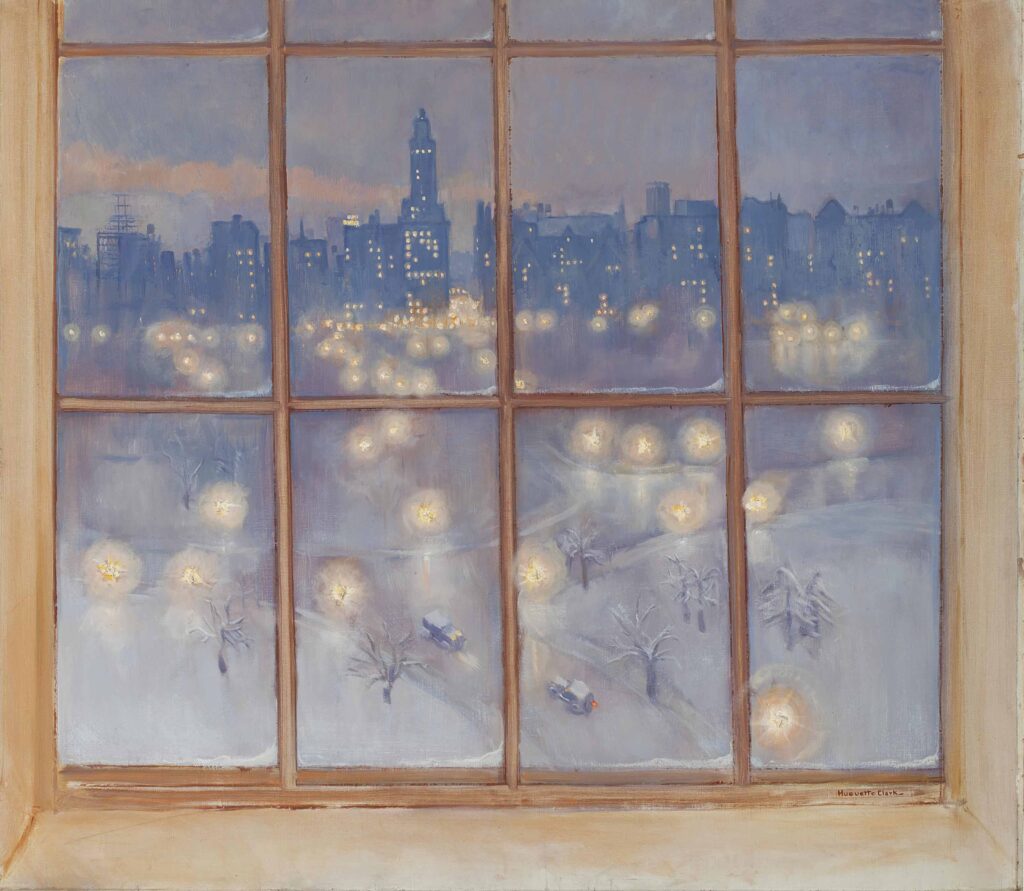
The window frame is painted as a frame, and she signed the mullion. That’s the Dakota across the park, so this was 907 Fifth Avenue, where she and her sister moved into separate apartments in 1926 after their fathers’ death. Huguette was 23. Around the same time, Florine Stettheimer painted a Christmas-time view across the Central Park skating pond to Columbus Circle. (Yale dates it from 1930-40, but the musical advertised on the marquee only ran in 1925.**)
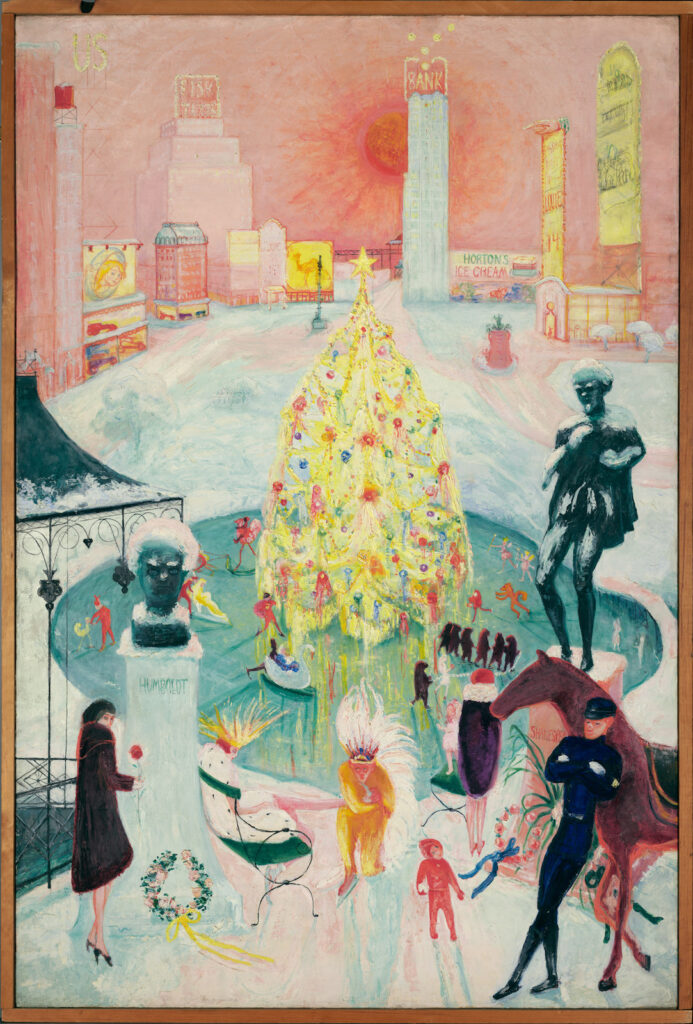
A couple of years later, in 1932, Charles Sheeler made a drawing of the view back from West Side for his patron Abby Aldrich Rockefeller. What a time to be rich and making art around Central Park.
*Y’all in this case does not include Prof. Michael Lobel who gently corrected me by pointing to his insightful tweets about Huguette Clark’s paintings four months/years/centuries ago in August. It really has been that kind of year.
** After several years and five seconds, I recognize that painting is not photography, and a reference to a 1925 play can reasonably infer it was not made before 1925, but is not determinative of whether it was made in 1930-40. Ms. Stettheimer could have just had a throwback reference like that.
Search Christie’s for works by Huguette Clark, who does not appear in their artist/maker database [christies]
